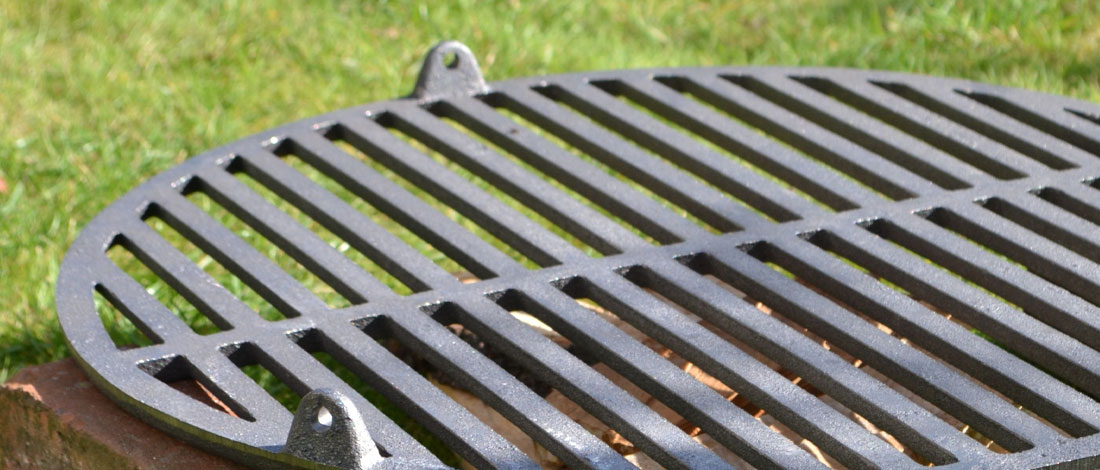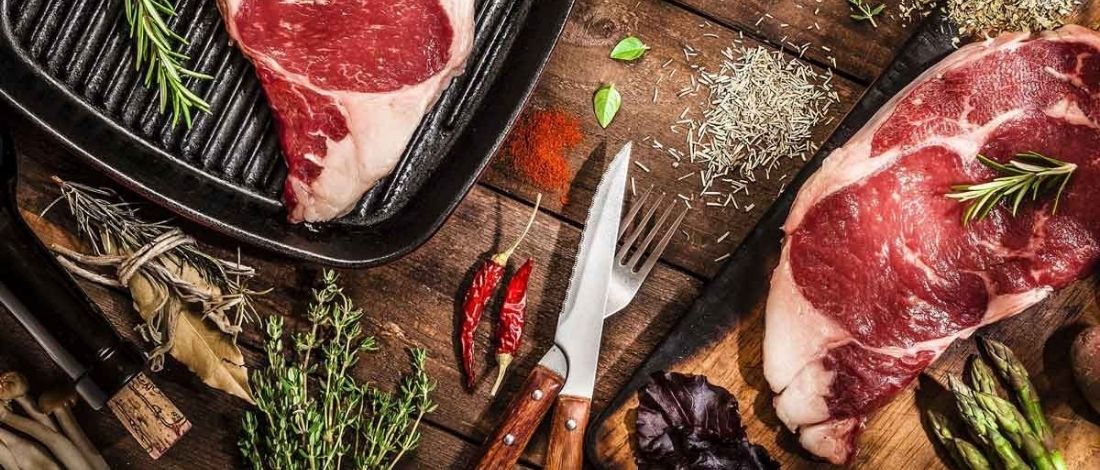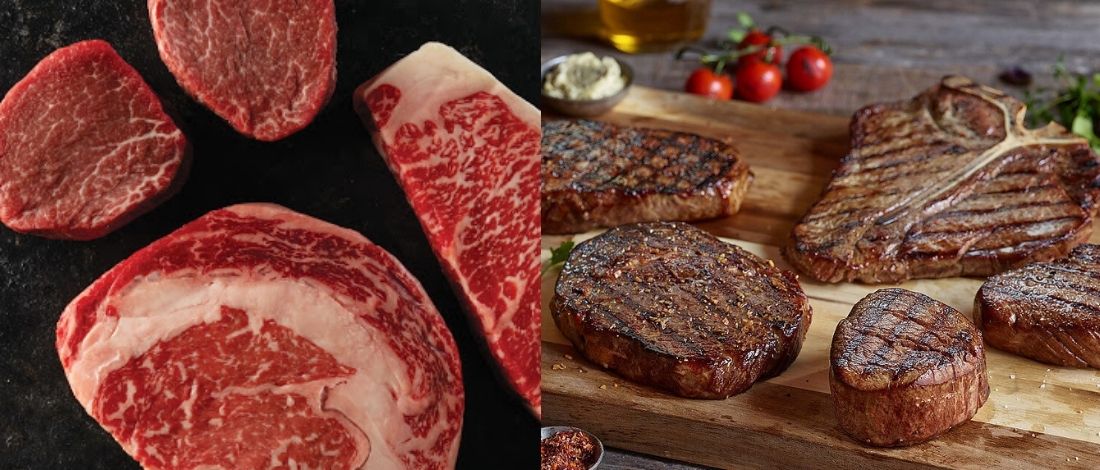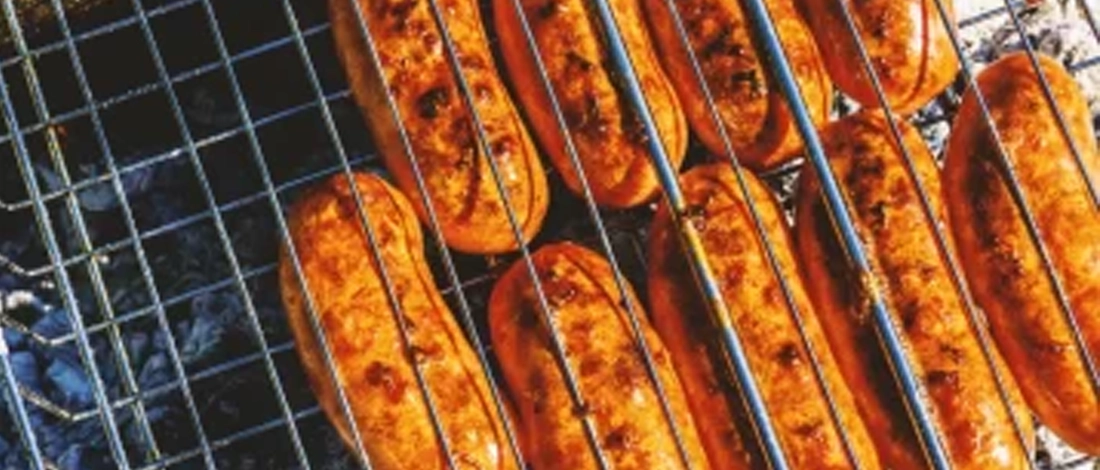Grill masters spend most of their time huddled around their grill grates, cooking up some delicious food for friends and family.
So, when so much time is spent grilling, it’s important to have a cooking surface that is both durable and tough.
With the two most common materials - cast iron and stainless steel - on the market, which grill grates truly come out on top?
Both provide a great grilling surface, each with its positives and negatives.
During my barbecue years, I have used both iron and stainless steel grills.
Using this knowledge, we’ll cover everything you need to know about the differences between these grates and find out which one best fits you and your grilling needs.
Quick Summary
- Stainless steel grates are lighter, heat up quickly, and are more rust-resistant but don't retain heat well. Cast iron grates retain and transfer heat better, but require constant maintenance and can rust easily.
- Cast iron grates are suitable for cooking thick cuts of meat and small vegetables, while stainless steel may be better for quick heating. Cast iron offers better grill marks but takes longer to heat up.
- A 2006 study in the National Library of Medicine found that cooking with cast iron, stainless steel, and soapstone pans affects mineral migration to food, suggesting nutritional benefits or low risks depending on the material, especially when preparing acidic foods [1].
- Stainless steel grates are easier to clean and don't require oiling, while cast iron grates need regular oiling and care to prevent rusting and maintain their non-stick properties.
Cast Iron Grates
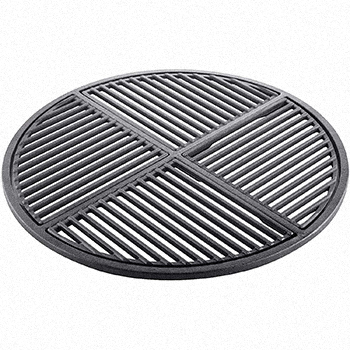
For thousands of years, cast iron has been used as a reliable cooking surface. However, the iron we use on our grills is quite different from its pure form.
Pure iron is actually quite soft, therefore with a little elbow grease, you can cut right through it.
The iron used on a cast iron cooking grate contains 2 - 4% carbon and other ingredients such as manganese, silicon, and sulfur.
Thanks to this carbon quality, the cast iron becomes incredibly hard and durable.
The downside, however, is this particular material can be brittle and rust easily.
Cast iron grill grates come in two different choices:
- Cast iron grates without an exterior coat - black, porous with a slightly rough surface. These are similar to a cast iron skillet.
- Cast iron grates plated with porcelain enamel. This finish can be any color and is usually smooth.
The cast iron grates without a coat remain spongy and porous. In order to protect the uncoated iron, making sure your grill is constantly seasoned using oils and fats will save your grill grate from corrosion. The non-stick surface forms with the help of tiny holes that absorb oil over time.
Cast iron grates with enamel coating have a better non-stick surface compared to uncoated cast iron.
This makes cast iron grill grates far easier to clean since food is less likely to stick. The coating also protects from oxygen and iron oxide.
However, If you happen to drop the grate, the porcelain coating may crack. It’s also common for these enamel coated grates to develop hairline cracks over time due to brushing and scrubbing.
Stainless Steel Grates
Unlike a cast iron grate, these grates contain less carbon, but the rest of the ingredients are quite similar.
The biggest difference in material is chromium, which forms the silvery protective shield on the outside, stopping the iron inside from corrupting.
It is important to know that just because your stainless steel cooking grates are silver, doesn’t mean they’re actually made of stainless steel.
In fact, cheaper grates are simply regular plated steel. These grates won’t last long when faced with heat and cleaning.
The surface will soon become chipped and worn, leaving it susceptible to rust and sticking.
However, if you get your hands on a genuine stainless steel grate, it will be far more resistant to sticking thanks to its smoother surface.
It’ll also last considerably longer than regular plating since it takes longer to corrode.
Keep in mind, stainless steel will wear and tear with age and is by no means corrosion-free. That being said, stainless grates can last for many, many years.
Cast Iron Grill Grates Pros & Cons

- Heat retention - Cast iron is great at retention once the grill grates become hot. This factor helps you continue cooking your food well, even when you’re slowly shutting down your fire.
- Good heat transfer - Cast iron grates conduct heat well. Any food you decide to cook here will be well-seared and develop much more noticeable sear marks.
- Non-stick - You may find your cast iron grill grate already comes pre-seasoned. To maintain this non-stick surface, you’ll have to oil the cast iron grill every time you go to cook. This step will ensure your cast iron grill grate remains non-stick for years to come.
- Long durability - As long as you maintain your cast iron grill well, you will be cooking on it for years to come. They may cost more, but they can last for decades.
- Heavy - Cast iron grill grates are heavy. In turn, this makes them difficult and frankly a pain to shift around, especially when they get greasy and hot.
- Slower heat-up - While cast iron grills are known for their amazing heat retaining and transferring, they do take a while to initially warm up.
- Quick to rust - A concern many people face is with how quickly cast iron grill grates rust. Once you forget to bring your grates inside, they’ll begin to oxidize in rainy, humid weather. Coat them with oil regularly and always bring them inside if you’re not using your grill grates.
- More maintenance - Since cast iron grates are susceptible to rust, you’ll have to take a few extra steps to maintain them. Cast iron grill grates are constantly under high temperatures, meaning the seasoning gets burnt away every time you cook up some meat. To avoid rust, you’ll have to season your grill each and every time before cooking.
The Pros And Cons Of Stainless Steel Grill Grates

- Quick heat up - If you don’t have time to be waiting around for your grill to heat up, grilling with a stainless steel grate may be perfect for you. Generally, it takes about 10 minutes for the grate to get hot before your meat is ready to be cooked.
- Lightweight - Stainless grates are much lighter due to their metals. They’re a lot easier to move, especially when the grate is still hot and greasy.
- Resistant to rust - You won’t have to constantly season your stainless steel grill grates since they are less susceptible to corrosion and rust.
- Easy maintenance - Since the cooking grates are easy to clean, they require little upkeep. A quick grill brush and you’re ready to go.
- Poor at retaining heat - While you may be happy that stainless steel warms up quickly, it doesn’t retain temperature well. Once you remove the heat source, your stainless steel grates will quickly cool off.
- Lose quality over time - Of course, you get what you pay for. However, even the highest quality of stainless steel doesn’t last forever. Over time, the material will begin to discolor and chip away.
- Warping - Stainless steel grill grates have been known to bend and warp over time, resulting in an uneven top.
The Food’s You’re Cooking
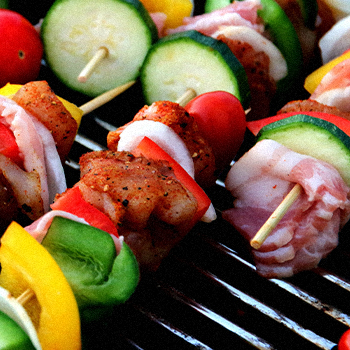
Since the reason you’re buying a grill grate in the first place is to cook up some food, it's important to take into consideration the type of food you’ll be cooking.
When it comes to stainless steel vs cast iron, cast iron grates take a longer time to heat up.
However, once it’s hot, it can retain and transfer heat well.
Because of this, you’ll end up with well-defined grill marks on your barbecue meat. Generally speaking, this will make your meat look more professional.
It’s your choice whether or not you think grill marks are important. It all depends on your preference and definition of a ‘perfect steak.’
Thick grates, however, block the radiant temperature, making it harder to provide a rich, even crust on a cut of steak.
The area of meat that touches the cast iron grate will turn dark brown or black since the grate cooks the meat directly. According to an article on Science Direct, this darkening isn’t a cause for concern, in fact, it actually improves the flavor and is referred to as the Maillard reaction [2].
If you’re looking to cook up a lot of thick cuts of meat, you’ll be happy to know they do well on both types of grates.
When it comes to thinner, more delicate cuts, you may have a harder time. The food cooks better and has more flavor when in direct contact with the grill.
You may have to choose between dry food with a good sear and grill marks over a well-cooked meal that’s tasteless on the outside.
“No rules. Don't be afraid to do whatever you want. Cooking doesn't have to have rules. I don't like it that way."
- Masaharu Morimoto
So, if you’re cooking up thin cuts of chicken or fish, avoid a stainless steel grate. Your food will not have enough direct contact and it’s highly likely the fish will flake and fall between the grates.
If you like to cook vegetables and other non-meat items, it’ll be better to go with a cast iron grate, especially if you’re cooking smaller foods.
The wide bars on cast iron grates will prevent the small items from falling through. It’ll also allow you to create more contact with the food, adding flavor and caramelization to your veggies.
Related Article: Review of Top-Quality Stainless Steel Grills
Cleaning And Maintenance

Whether or not you’re team steel or team iron, cleaning your grates after every use is incredibly important for a long and healthy grilling life.
Saying goodbye to all that built-up grease and food will help to maintain a smooth, non-stick top. While the grates are still hot, grab your nylon brush to get rid of as much residue as possible.
Stainless Steel Grates
Stainless steel grates are much easier to clean compared to cast iron ones. Still, you’ll have to take good care of your stainless steel grill grates to ensure they last for a long time. Always make it your mission to clean off your steel grate as soon as you’re finished cooking.
With the use of your grill brush, remove any remaining food debris with a good scrub.
Once finished, close your gas grill’s lid and let everything cool down. Stainless steel grates don’t require a coat of oil, unlike cast iron.
However, it may be a good idea to run a lemon across the grate in order to sterilize it.
On occasion, you’ll want to wash your stainless steel grate thoroughly to get rid of any deep grill marks. Simply wash with some dish soap and a scouring pad. Once washed, let the grate air dry.
Cast Iron Grates
Much like any cooking equipment, it’s better to clean cast iron grill grates directly after cooking.
Get rid of any debris and food particles off your grates. Once clean, use a brush to coat the grill with a thin layer of oil.
Try to use one with a high smoke point such as peanut oil. The heat of the grill will help to seal up the pores.
Again, it is recommended to do a deep clean on your cast iron grates every once in a while.
Stainless Steel VS Cast Iron Comparison Table
Stainless Steel Grates |
Cast Iron Grill Grates |
|
| Appearance | Silver and smooth | Non coated: black and rough
Coated: smooth and shiny |
| Non-stick | Will slowly begin to lose non-stick properties | Needs constant upkeep to maintain non-stick properties |
| Heating Speed | Quick | Slow |
| Heat Retention | Low | High |
| Heat Transfering | Low | High |
| Grill Marks | Low | High |
| Chance Of Rusting | Low | High |
| Durability | Medium to high for good quality steel
Low for low quality steel |
High when cared for correctly |
| Weight | Light | Heavy |
| Maintenance | Medium | High |
How To Prevent Food Sticking

Even if your gas grill’s grate is advertised as ‘non stick’, there are still a few things we need to do for that statement to run true.
- Keep it clean - When you fail to clean off your grate well, carbon residue will begin to form. This residue grabs onto the crevices of your fresh food and creates a sticky layer between your food and the grate. Keeping your grate clean will not only fix this issue but protect your grate also.
- Oil the food - Instead of oiling the grate, oil your food. Not only does this prevent the oil from dripping into the fire below, but it also stops the food from sticking to the grate. When you oil up your food, it creates a slippery divider between the two.
- Patience - Heat from the grate causes the moisture in the food to evaporate. If you wait until the food touching the grill has dried out, it’ll make it far easier to flip your food.
Read More: Smoker vs Grill: The Ultimate Comparison
References:
- https://pubmed.ncbi.nlm.nih.gov/17249489/
- https://www.sciencedirect.com/topics/agricultural-and-biological-sciences/maillard-reaction


